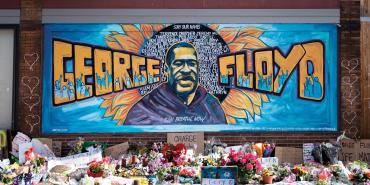As students nationwide have joined the fight for racial equity and justice, many educators are engaging students in discussing our nation’s fraught history of systemic racism. Because this complex topic can feel overwhelming at times, we highlight several resources available through Share My Lesson.
Connecting the Present to the Past
To ground such conversations, PBS NewsHour Extra, a Share My Lesson partner, offers materials focused on the death of George Floyd, an unarmed Black man killed by police in May. “Murder of George Floyd Sets Off Massive Protests” includes a news summary and video footage, edited for length, with a trigger warning for disturbing content. The lesson includes discussion questions on structural racism and police brutality, and also prompts students to consider the role of video in highlighting such oppression.
Another Share My Lesson partner, ADL, offers “Black Lives Matter: From Hashtag to Movement,” which unpacks how the movement began. What started as #BlackLivesMatter in the wake of the 2013 death of Trayvon Martin, an unarmed African American teenager, grew into a full-fledged movement after the killing of two other unarmed Black men in 2014: Eric Garner and Michael Brown. By watching a video and reading about three Black Lives Matter activists—DeRay Mckesson, Johnetta Elzie, and Zellie Imani—students learn how social media has enabled the movement’s work.
In a resource from Speak Truth to Power, a project of the Robert F. Kennedy Center for Justice and Human Rights and also a Share My Lesson partner, students learn about nonviolent activism and one of its biggest advocates, Congressman John Lewis, who died in July from cancer. The lesson, produced in partnership with New York State United Teachers, encourages sixth- through eighth-graders to reflect on Lewis’s legacy after reading his remarks from the JFK Profile in Courage award ceremony in 2001.
To reach further back in time, educators can turn to “The 1619 Project” published last year by The New York Times Magazine. In March, Share My Lesson and the Pulitzer Center hosted a virtual conference on engaging students with the project, which reexamined this country’s legacy of slavery. The conference, which is available on demand, presented journalist Nikole Hannah-Jones’s lead essay for the project, a reading guide, and extension activities.
Starting When Students Are Young
Learning to celebrate differences should begin with anti-bias education designed for children. “Race Talk: Engaging Young People in Conversations about Race and Racism,” a brief published by ADL, helps educators in supporting such conversations. From creating a respectful and safe classroom environment to understanding diverse perspectives, the document is a solid primer on teaching this subject. Helpfully, it includes a link to a glossary related to bias, injustice, and bullying specifically for students in kindergarten through fifth grade.
Exposing children to books with diverse characters can ensure that they see, understand, and appreciate racial and cultural differences. Be sure to check out an anti-racist reading list that Share My Lesson has created to spread the values of kindness, caring, and empathy. The list, which features especially engaging selections for young children—such as the picture book Sulwe, by Lupita Nyong’o, and Hair Love, by Matthew A. Cherry—will continue to be updated.
Explicitly teaching students the importance of reading diverse books is also a lesson in itself. In “Diverse Books Matter,” created by ADL, third- through fifth-graders learn about Marley Dias, an African American girl who started the #1000BlackGirlBooks campaign in 2015 to highlight the lack of children’s books with African American characters. The lesson then introduces students to the concept of diverse books as mirrors and windows. The metaphor refers to the need for children to see themselves in books and for books to show children worlds that differ from their own so they can navigate life experiences.
To see what other resources Share My Lesson offers on teaching for racial equity and justice, visit our entire collection of lesson plans, resources, and activities. If you have additional ideas or requests, please reach out to us at content@sharemylesson.com.
–THE SHARE MY LESSON TEAM

